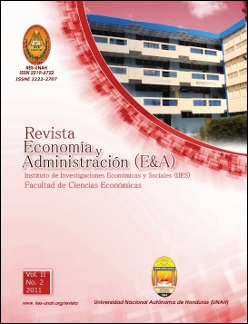La iniciativa de integración del Plan Puebla Panamá: consideraciones desde la postura del desarrollo regional equilibrado de Mesoamérica.
DOI:
https://doi.org/10.5377/eya.v2i2.4342Palabras clave:
Desarrollo regional, Desarrollo local, Gestión pública, Desarrollo sustentable, Papel del Estado, Equilibrio regional, Participacion ciudadanaResumen
Las integraciones regionales que la globalización empuja a emprender son asumidas por los países como signo de inserción a la corriente actual del crecimiento. En su afán de ampliar sus áreas de influencia, los países desarrollados promueven, globalmente, las prácticas liberales del comercio y las inversiones en los países menos desarrollados a través de estas integraciones. El Plan Puebla Panamá (PPP) es una de estas iniciativas de integración que ha gozado de aceptación y de promoción de parte de los países desarrollados y de los gobiernos de los países centroamericanos, de México y Columbia.Por consiguiente, este ensayo presenta un análisis de las bases principales del PPP, plantea una crítica desde la óptica del desarrollo regional equilibrado, formula algunas propuestas y finalmente, expone una evaluación sobre la viabilidad de reformular el PPP para convertirlo en un mecanismo de desarrollo regional equilibrado en Mesoamérica.
Descargas
936
Descargas
Publicado
Cómo citar
Número
Sección
Licencia
Los autores que publican en esta revista están de acuerdo con los siguientes términos:
- Los autores conservan los derechos de autor y garantizan a la revista el derecho de ser la primera publicación del trabajo al igual que licenciado bajo una Creative Commons Attribution License que permite a otros compartir el trabajo con un reconocimiento de la autoría del trabajo y la publicación inicial en esta revista.
- Los autores pueden establecer por separado acuerdos adicionales para la distribución no exclusiva de la versión de la obra publicada en la revista (por ejemplo, situarlo en un repositorio institucional o publicarlo en un libro), con un reconocimiento de su publicación inicial en esta revista.
- Se permite y se anima a los autores a difundir sus trabajos electrónicamente (por ejemplo, en repositorios institucionales o en su propio sitio web) antes y durante el proceso de envío, ya que puede dar lugar a intercambios productivos, así como a una citación más temprana y mayor de los trabajos publicados (Véase The Effect of Open Access) (en inglés).




